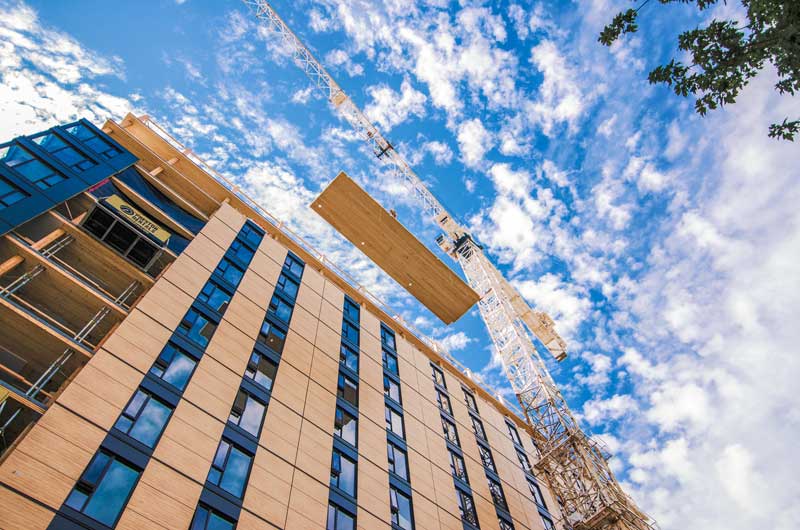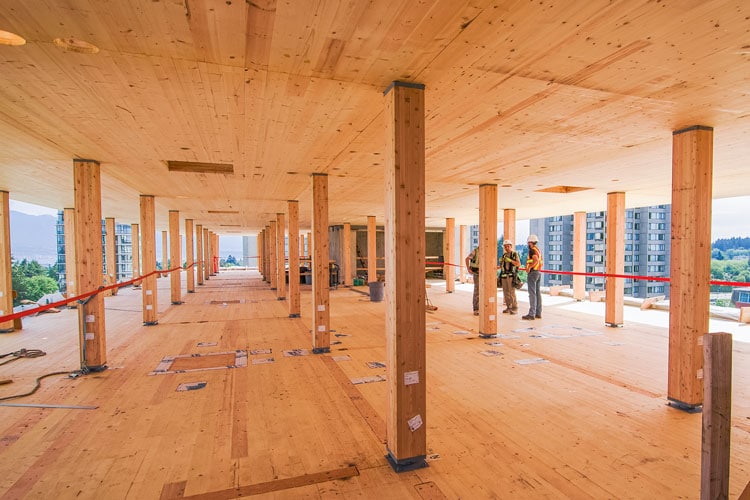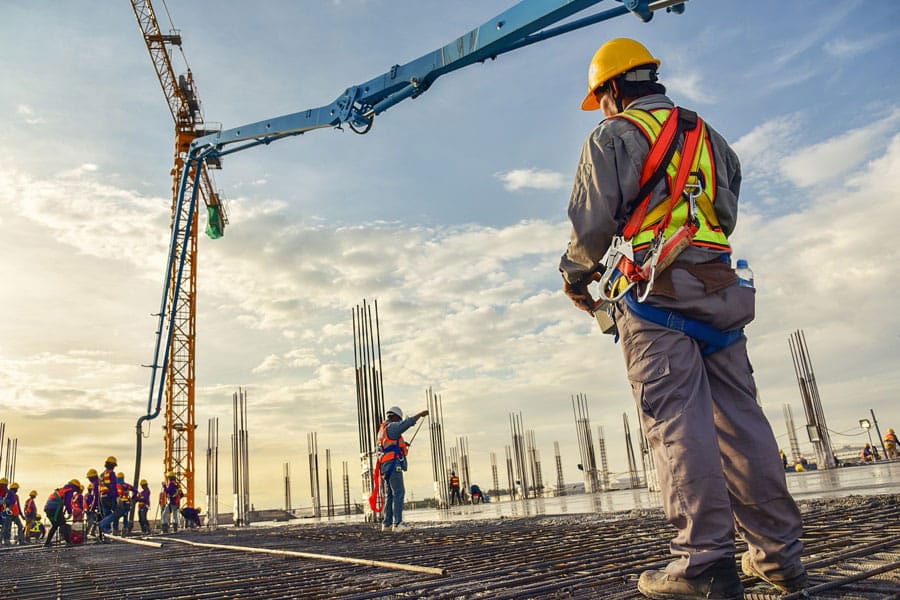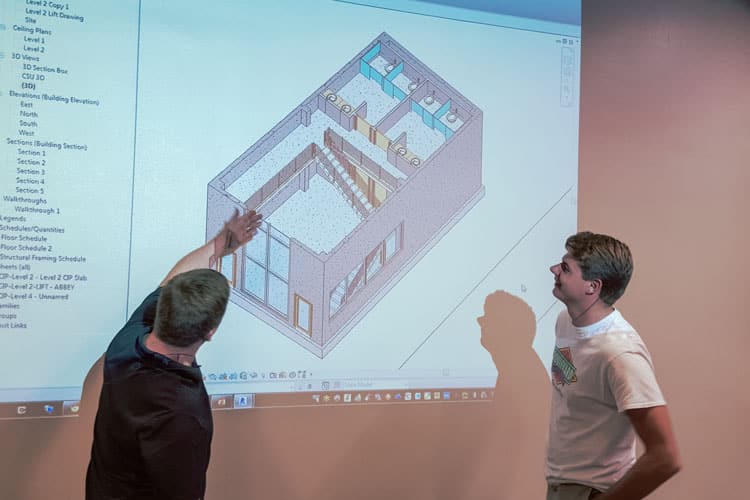Cross-laminated timber is no longer just a fad or a choice for the super-environmentalists among us. The building material, which consists of several layers of kiln-dried lumber boards stacked in alternating directions that are bonded and then pressed to form a solid panel, has been used in a number of high-profile, award-winning projects across the globe. The benefits, including cost-effectiveness and fast onsite installation, are numerous and proven, and CLT has even surpassed its traditional counterparts in areas of seismic, thermal and fire performance. Sustainability is becoming increasingly important these days, and CLT has a lot to offer on that front as well. Its carbon footprint is less than steel and concrete, and because it’s fabricated offsite, the right preparation allows for faster build times and decreased site risk.
CLT Has Advantages Over Traditional Materials
Andrew Mather, Principal Structural Engineer at Ramboll UK, recently worked on a 10-story, 121-unit apartment complex called Dalston Works in London, that is one of the world’s largest CLT buildings. Due to poor soil conditions and continued underground development, traditional methods were undesirable. By using CLT, the apartment block is significantly lighter than it would have had been if it were designed with concrete. On top of that, the prefabricated wood paneling will save 2,400 metric tons of carbon compared to a concrete frame. That’s because the wood continues to store the carbon absorbed by trees during their growing life, reducing emissions. Plus, manufacturing CLT requires less energy than other building materials.
The building came with specific engineering and coordination challenges, as Mather explains: “The cross-laminated timber panels were fabricated in Austria weeks before they were actually installed onsite. All the openings, all the doors, all the windows needed to be accurate on everyone’s drawings and in the fabrication model.”
Architects, engineers and builders using CLT must rely on their technology suites to ensure speedy and safe installation. It’s a learning curve, but certainly not an insurmountable one, and the long-term cost advantages more than make it worthwhile.
World’s Tallest Wooden Structure, Thanks to CLT
In North America, another CLT project has gained attention for being the tallest building with a timber structure in the world: Brock Commons, on the University of British Columbia campus in Vancouver, Canada, measures 18 stories high and houses more than 400 students. The engineering firm behind the feat, BC-based Fast + Epp, was awarded the prestigious global Construction Innovation award from the Institution of Structural Engineers for its novel, economical and sustainable solution.
Designed by Vancouver architectural firm Acton Ostry, the building went up at record speed, and the construction process was aided by heavy early investment in BIM technologies, including a 3D model that allowed the various parties to develop the best possible plan of action. A two-story mock-up was built to test the structure’s stability prior to construction.
Robert Jackson, who was a project engineer on Brock Commons, notes that it was important to get “contractors, timber suppliers and timber installers on the design team early, so they can provide their input.”
Owner Buy-In and Technology Adoption Crucial
“One of the team’s main goals behind this project was not to ‘just be the tallest,’ but it was to prove that mass timber buildings could be built at a competitive price to a cast-in-place concrete alternative. We achieved that goal, of proving that it is indeed cost competitive in this local market.”
Brock Commons wasn’t Fast + Epp’s first time using mass timber, nor will it be their last. “I’ve got several more CLT projects on my desk right now, and lots more in the office. You’ll see a lot more CLT and mass timber buildings going up in the next 10 years,” Jackson predicts.
As the construction industry continues to innovate, adopt new technologies and discover that sustainability can augment the bottom line, we’d put our money on Jackson’s prediction turning true. CLT is a sustainable building material, often stands up better than alternatives in disasters and provides real economic savings, with offsite fabrication allowing for efficiency in building and less risk on the jobsite.

















